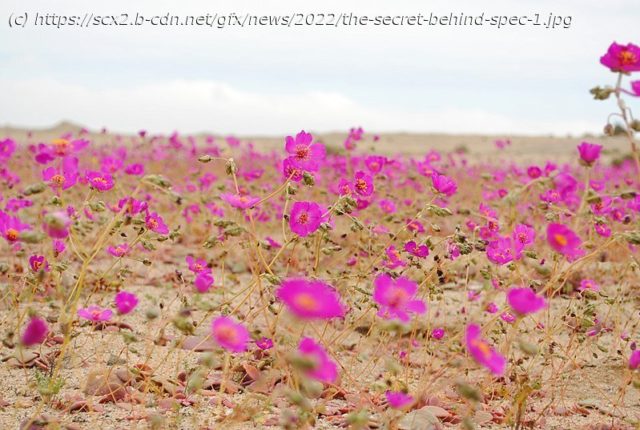The Atacama desert, which stretches for approximately 1,600 km along the western coast of the cone of South America, is the driest place on Earth. Some weather stations there have never recorded rainfall throughout their existence. But it’s far from barren: many species live here that occur nowhere else, adapted to its extreme conditions.
The Atacama desert, which stretches for approximately 1,600 km along the western coast of the cone of South America, is the driest place on Earth. Some weather stations there have never recorded rainfall throughout their existence. But it’s far from barren: many species live here that occur nowhere else, adapted to its extreme conditions.
And approximately every 5 to 10 years, from September to mid-November, the Atacama hosts one of the most spectacular sights of the natural world: the „desierto florido“ (literally „blooming desert“). These mass blooms, one of which is currently going on in the northern Atacama after abundant rainfall earlier this year, often attract media attention from around the globe.
But which physiological and evolutionary mechanisms enable the great diversity of colors, shapes, and visual patterns of flowers during desiertos floridos? And how do pollinators—in the Atacama, mainly hymenopterans like solitary wasps and bees—for whose benefit this visual extravaganza evolved, perceive all this variation?That’s the subject of a new study in Frontiers in Ecology and Evolution.
„Our aim was to shed light on the ecological and evolutionary mechanisms that cause biological diversity in extreme environments like the Atacama desert,“ said first author Dr. Jaime Martínez-Harms, a researcher at the Institute of Agricultural Research in La Cruz, Chile.
„Here we show that flowers of the pussypaw Cistanthe longiscapa, a representative species for desiertos floridos in the Atacama desert, are highly variable in the color and patterns they present to pollinators. This variability probably results from different so-called ‚betalain‘ pigments in the flower petals.






